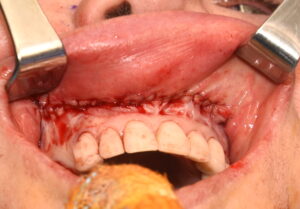Augmentation of the midface consists of several distinct zones based on anatomic location and their shape. (convexity vs concavity) The most common midface augmentation area is a lateral one, the cheeks, which is mainly about increasing the convexity of the natural bone shape. A less common but equally important one is a central midface zone, the pyriform aperture, which is designed to decreased the natural concave shape of the bone.
The pyriform aperture is the bone that surrounds the central nasal cavity. It has a concave shape as it creates the medial borders of the maxilla and the premaxilla. It has one small protuberance at its midline location known as the anterior nasal spine on which the causal septum rests. Its degree of forward growth influences the projection of the nose, nasal width as well as the profile of the midface. Naturally broader midfaces often have more recessed pyriform aperture regions but such midface recessions occur from congenital deformities from clefts as well as underdeveloped middle growth.
Augmentation of the pyriform aperture region has a long implant history, most commonly performed by various premaxillary, paranasal and pyriform aperture designs. Placement of such implants has been done through either intraoral or intranasal incisional approaches. The original history with this area of midface augmentation was in conjunction with rhinoplasty, particularly in the Asian patient. But it is more widely used today in many forms of central midface recession for profile enhancement.




The ePTFE nasal base implant is an improvement over prior implant designs in both shape and material. Its adaptable and flexible material characteristics allows it to obtain a subperiosteal snug fit under the nose and can be secured with suture fixation only.
Dr. Barry Eppley
Indianapolis, Indiana




